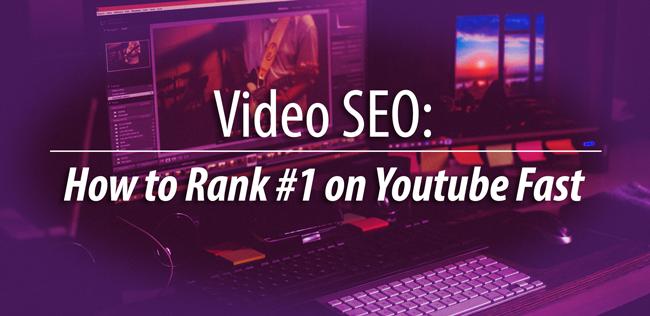Compelling Stats about Video SEO You Ought to Know
The state of video marketing in 2017 is fairly different to what it was just one year ago. Social networking sites are being used worldwide on a daily basis, with some users simply utilizing the social sharing and communication platforms for general purposes, and others capitalizing on it for business advertising.
Video SEO is an incredibly useful tactic for attracting target audiences and so, it’s worth discovering the latest statistics gathered from Hubspot about the rise of video marketing:
- Posts with video links can attract up to 3x more visitors.
- B2C marketers place greater importance on visual content than B2B marketers.
- 37% of marketers said visual marketing was the most important form of content for their business, second only to blogging (38%).
- More than 60% of marketers and small business owners said they planned to increase investment in video marketing in 2017.
- 34% of B2C marketers say pre-produced video will be critical to content marketing success in 2017.
- In a 2016 HubSpot survey, 43% of consumers wanted to see more video content in 2016.
Video SEO is Delivering Quantifiable Results
By 2019, video SEO will claim an estimated 90% of all web traffic. That’s four-fifths of global Internet traffic! High-quality methods of marketing are being invested in now, with 70% of online marketers devoting more time and money into marketing in 2017 than they were in 2016. What’s more, video is a whopping 53x more likely to rank on the top spot of Google!
Now, that you’re aware of the potential of video SEO, let’s move onto the five ranking factors that could mean the difference between your video SEO campaign flourishing or flopping.
Here they are:
- PPP formula – Preview, Proof, Preview Again – This simple method, known as the PPP formula, combines all three steps in a clever way. You want to hook your audience within the first 15 seconds and if you succeed, chances are they are going to sit and watch the entirety of the video. Begin by previewing what your video is about, but don’t lose viewers by making the intro too long. Cut out the fluff, tell them what to expect, provide proof in the firm of research and/or experience, and conclude by reiterating what the video is about. Mentioning something specific will help your viewers to absorb everything and take action.
- Using the Exact Keyword in Title – One of the most important aspects of video SEO that newbies fail on is using the keyword in the title. Not only should you be including the keyword in the title, but fairly close to the beginning of your title. Refrain from making your title overly long, too.
- Say Your Keyword In Your Video – Yes, YouTube knows if your video content does not match the video SEO description. Match the target keywords with your on-page meta data and mention the keyword (long-tail or specific keywords work best) a few times in the video itself.
- Remember to Include User Interaction Signals – The more comments, likes and subscribers you get from your YouTube uploads, the better your video SEO tactic is working. This will translate to higher rankings and will naturally encourage user interaction signals. Evoke emotion, add annotations for viewers to ‘like’ the video, and request subscriptions and comments.
- Optimize for Click Through Rate – A boring thumbnail, unoptimized snippet, and a keyword-lacking title will affect rankings significantly. Encourage a better click-through rate by including the target keyword once in both the snippet and title, and creating a custom thumbnail.
Consider this – just one minute of video is worth 1.8 million words. Compare that with the “1000” words a story is said to tell, and it is clear that you ought to be funneling your marketing efforts into video SEO, as well as content marketing. Uploading videos onto Youtube and other video sharing platforms can be used to grow your business from a unique search engine perspective. Just remember to label it, name it, describe it, transcribe it, tag it, link it, and most importantly, submit it!
